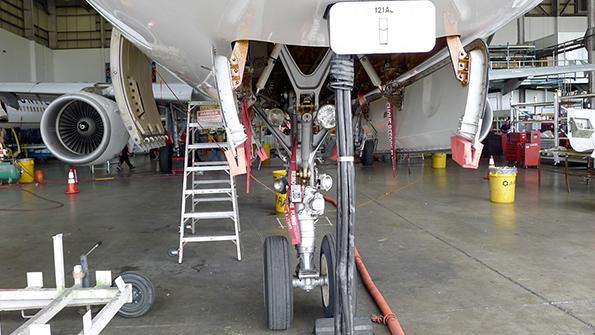
The FAA is adjusting on the fly to conduct as much of its oversight as possible while accommodating the new world order of social distancing: blending new processes, policies and deadline exemptions to keep operators compliant during the novel coronavirus pandemic.
As of April 8, the agency had issued 16 policy deviations and regulatory exemptions covering a wide range of issues. Many addressed training for pilots, cabin crew, dispatchers and others who are required to hold a license or to receive regular instruction. The general theme: Extend deadlines on recurrent training requirements to help avoid in-person instruction during the pandemic.
Pilots and flight engineers also will see upcoming medical certificate expirations extended through June 30. “Requiring pilots to undergo in-person medical examinations would further stress the health care system, and would increase the risk of transmitting the virus through personal contact between the doctor and the applicant,” the FAA said.
In some cases, the agency is making small changes to allow surveillance to continue. For instance, airport inspections have not stopped, but inspectors and airport personnel are expected to practice social distancing.
In other cases, the agency developed procedures that will help industry stay compliant without requiring an FAA inspector’s on-site presence. Foreign repair stations that already have approvals may not get annual inspections if travel restrictions prevent FAA personnel from getting to the shops, but they will not lose their approvals either. Other methods are being explored to safely bridge physical gaps with technology.
On March 31, the agency issued long-awaited policy on using real-time and recorded video “to perform prototype conformity inspections, engineering and ground tests, engineering compliance inspections, production conformity inspections, and inspections” for issuing 8130-3s, or airworthiness approval tags for parts and assemblies.
“Remote technology may have limitations that could render it unsuitable for some applications,” the FAA said. “Accordingly, careful consideration and risk management should be applied when making a determination when to use it.”
Video feeds were already permitted for observing certification-related tests, so long as the process is part of an FAA-approved plan. The new guidance, which has been in the works since 2018, broadens the use of remote feeds for use in training, inspections, and other procedures that manufacturers and maintenance providers need to comply with the agency’s regulations.
“This is the new reality,” says Sarah MacLeod, executive director of the Aeronautical Repair Station Association. “The agency has to be able to conduct normal activity and verify compliance as much as possible.”
Another issue the agency has addressed: removing red tape so that Part 147 schools can shift to online classes for aviation maintenance technicians working toward their airframe and powerplant (A&P) certificates. Under current protocol, the FAA approves distance learning curriculum on a class-by-class basis—a process that the agency acknowledges can be “time-consuming.” That is one reason only five of the 170 FAA-approved Part 147 schools had sought distance learning approval for their A&P candidates before the pandemic.
Updated guidance gives schools that comply with social distancing protocol the leeway to adopt temporary distance learning and testing programs for existing and newly enrolled students.
Agency approval is still required, but it is being fast-tracked. The FAA says about 40% of schools have asked for deviations, and 20% have suspended operations. The other 40% had yet to reach out to the agency.





